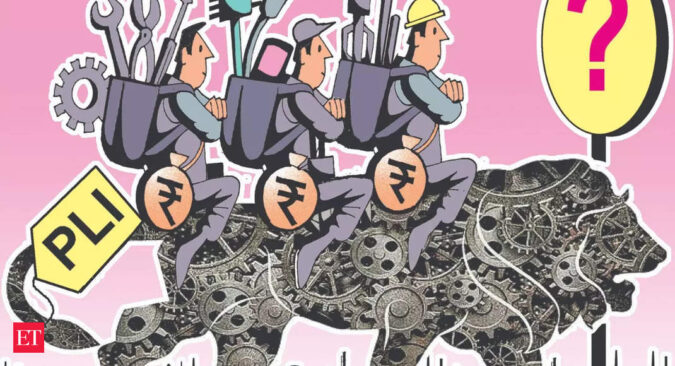It also said PLI for industries like food processing or auto, where many domestic manufacturers make similar products, introduces competitive distortion by giving money to a few firms.
“PLI money at the rate 4-6 per cent of incremental sales could increase profit margins by 30-40 per cent, giving a considerable price advantage over others,” GTRI Co-Founder Ajay Srivastava said.
He said non-PLI recipients suffer for no fault and the scheme should avoid incentivizing such sectors.
It should focus only on cutting-edge product groups where India has no manufacturing capabilities, he added.
PLI was announced by the government in 2021 for 14 sectors such as auto, textiles, white goods, telecom and pharma with an outlay of about Rs 2 lakh crore. The aim is to create global champions, boost manufacturing, exports and job creation. There was a consideration in the government to extend PLI incentives to sectors such as toys, bicycle, leather and footwear. Citing an example, the GTRI report said many smartphone makers disappeared in 2017 once GST abolished tax arbitrage and most firms disappeared after the abolition of MEIS (merchandise exports from India scheme).
“One way of ensuring deep manufacturing is not to announce PLI on the final product but on critical parts and components,” he said.
The report suggested introduction of PLI for clean energy technology, incentivizing local production of components and not the final product, PLI for developing expertise in basic sciences, chemistry, metals, and electronics, and for setting up industrial labs for reverse engineering.
It said given the upcoming carbon border taxes by the EU and soon by other countries, India must invest in clean energy technologies.
“We must ensure that a firm (in the electronics sector) adds genuine value rather than benefitting from the high tariff walls and labour arbitrage,” he said.
The PLI should provide rich incentives for producing raw material and critical components such as PCBA (printed circuit board assembly), memories, and chips. These constitute 60-80 per cent cost of most electronic devices.
Further, it said the reverse engineering would help reduce the dependence on imported machinery and enhance production quality.
This initiative would allow India to replicate advanced machinery used in textiles, mining, metal work, and agriculture sectors, it added.
